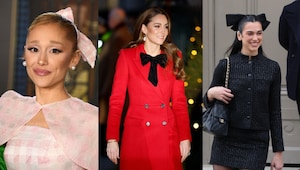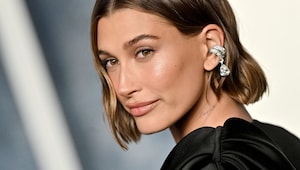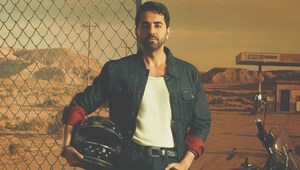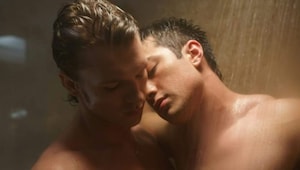How hip hop brought about a revolution with its music and fashion
Hip hop has grown to become one of the most prominent subcultures in music and fashion, and this year hip hop completes 50 years. Here’s all about Hip Hop.

Hip hop a.k.a rap (formerly, disco rap) is a widely recognised and familiar music genre that most people have encountered at some point in their lives. The first hip hop event took place on 11 August, 1973, when DJ Kool Herc and his sister hosted a party—Back to School Jam—at their apartment in the Bronx. DJ Kool Herc is regarded as the pioneer of hip hop for hosting various parties with the music being its main draw. DJs would mix and scratch records, while emcees would hype up the crowd with rhythmic verse. Over the years, hip hop became a platform for the marginalised to voice their struggles, hopes, and dreams, establishing the music genre as a powerful cultural movement.
During the social and economic unrest of '70s, the youth of neighbourhoods like Bronx found solace in expressing themselves through artistic and creative means. From its humble beginnings at block parties, hip hop quickly gained popularity and diversified its sound. In the '80s, artists such as Grandmaster Flash and the Furious Five, Run-D.M.C., and LL Cool J brought rap music to the mainstream with their groundbreaking records. The genre continued to evolve, incorporating various musical styles such as funk, soul, jazz, and even rock. The '90s marked the Golden Age of hip hop, with iconic figures like Tupac Shakur, The Notorious B.I.G., Nas, and Wu-Tang Clan revolutionising the art form with their raw and poetic lyrics.

Hip hop had now started moving out of New York City and travelled far and wide, leaving a huge impact everywhere it went—it found a vibrant home in various African countries with artists using the genre to address local concerns and express their cultural identities. African hip hop often blended indigenous rhythms and languages with rap and other elements. Artists in countries like Mexico, Brazil, Puerto Rico, and Cuba blended hip hop with local genres like reggaeton, salsa, and samba. Pitbull, Fat Joe and a few others became etched a place for themselves as top hip hop artists from Latin America.
In India, in the late '90s and early 2000s, hip hop started to gain traction among the niche communities in cities like Mumbai, Delhi and Bengaluru. These early adopters were instrumental in fostering the growth of an underground hip hop scene in the country. The rise of social media and online platforms, particularly YouTube, provided a space for Indian hip hop artists to share their work and connect with fans. The release of Gully Boy in 2019 is, by far, considered to be a major turning point for Indian hip hop. The film, inspired by the lives of Mumbai's street rappers Divine and Naezy, brought Indian hip hop to a wider audience and shed light on the struggles and stories of aspiring hip hop artists in the country. Hip hop events, battles, and competitions became more prevalent, providing platforms for budding artists to showcase their talent, connect with the community, and receive mentorship from established figures.

While the artists earned recognition for their music, they also came to be known for their fashion, which was largely influenced by street culture, urban life, and a sense of rebellion. During this period, graffiti and b-boying (breakdancing) played a significant role in the hip-hop scene, and influenced fashion choices. Baggy pants, track suits, Kangol hats, and sneakers like Adidas Superstars or Puma Suedes were popular among early hip-hop artists and fans. Gold chains and oversized sunglasses became an icon for the style.
In the '90s, high-end luxury brands like Gucci, Versace, and Louis Vuitton began incorporating hip hop style in their collections. Baggy jeans, oversized shirts, and bold prints were staples of this era, but with a focus on designer labels. Timberland boots became an iconic footwear choice.

The mid-2000s saw bigger collaborations between hip hop artists and fashion designers. Kanye West, for instance, became known for his interest in fashion and collaborations with brands like Nike and Louis Vuitton, and now owns Yeezy- a brand with hip hop aesthetics. Skateboarding culture and streetwear started influencing hip-hop fashion during the late 2000s and well into the 2010s. Brands like Supreme, BAPE, and Off-White gained popularity among hip-hop artists and fans alike. Skinny jeans, graphic hoodies, snapback caps, and Vans or Converse sneakers became part of the new hip-hop style, giving them a more edgy and carefree look. The hip-hop fashion landscape in the 2010s embraced diversity and individuality. Artists and influencers began exploring a wide range of styles, from retro-inspired looks to gender-fluid fashion. Athleisure also became a significant trend, with artists like Drake and Rihanna launching their own brands. Brands like Yeezy by Kanye West, G-star Raw by Pharrell Williams also became popular for its street style line.

Beyond music and fashion, hip hop has been a powerful platform for social activism and commentary on social issues. Many artists use their platform to address racial inequality, poverty, police brutality, and other societal injustices. From Public Enemy's politically charged anthems to Kendrick Lamar's introspective storytelling on African-American struggles, hip hop artists continue to raise awareness and provoke discussions about pressing societal concerns.
Hip hop subculture has come a long way from its humble beginnings in the streets of New York City—it has grown into a global phenomenon that transcends borders, connecting people from diverse backgrounds through its music, fashion, dance, and activism, and its influence will undoubtedly continue to shape the world, amplifying the voices of the marginalised communities and inspiring generations to come.
more from Fashion

Bows are back and they’re not playing cute anymore

Your guide to all the cute accessories for elevating every party look!

Anya Singh is just getting started

Forget New Year's resolutions, this is Team Cosmo’s official f**k it list

If you’re celebrating this season, you’ll want to do it at Shangri-La Eros New Delhi

Ayushmann Khurrana reflects on navigating Bollywood, being embraced as an outsider, and the layered realities of fame

What does it mean to be queer after 'Heated Rivalry' ended?

9 surprising foods to avoid if you want better sleep: from tomatoes to soy sauce

‘I’ve caught hundreds of men cheating’: TikTok’s honey trappers on how they know if someone is playing around

The best makeup tonics to upgrade your skincare and makeup routine
